In my previous article here on DotaBlast, I embedded a couple of “afterthoughts”, including a few tweets with a variety of calculated information that I thought was somewhat relevant given the new patch. The following tweet generated a lot of questions:
This is how you play alchemist (from aggregated data on winning pro games and successful pub builds). pic.twitter.com/n6RONv3yYM
— Ryan 'Gorgon' Jurado (@TheWonderCow) February 28, 2015
In response, here’s a pretty detailed look at this hero, his history, and why a build similar to the one above is still the most successful method of running an Alchemist.
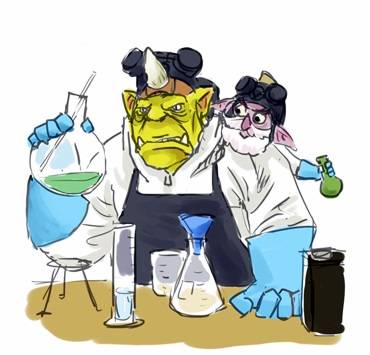
© yongharn
Chemistry in the snow
Last winter, Alchemist wasn’t looking so hot. His public pick rate was well below 50% and dropping. His winrate didn’t fare too much better. The odds of a pro player picking him were about the same as that player’s odds of being murdered by a vengeful caterpillar.
Not zero, but very, very close.
Now that Alchemist has had four patches of moderate buffing, it seems players are starting to pay attention to him. At the surface, that buffing has largely been increases to his maximum GPM – specifically in the early game – which leads many players to believe that Alchemist should be run as a farming carry.
That’s not an easy way to win with this hero, and it shows in his winrates. Look at this data, courtesy of Dotabuff, which looks at winrates based on build order:

Notice that by saving Greed until level 9, you ultimately get a 6% winrate increase (about 1.5% per level saved). We can assume the vast majority of players who build without early levels in Greevil’s Greed are support players, which means about 5.6% of Alchemists play a non-farming role.
Best estimates when cross-referencing that number to safe-lane Alchemist figures, support Alchemists win just over 51% of games while farming carry Alchemists win just over 45% of games (from combining laning data with the number of players who wait until level 14 to max Greed).
There’s a lot of wiggle room in those estimates, but what we can say for sure is that supports with reasonable support builds win more than carries who focus on greed.
Why? Because a Dota team is an ecosystem. Ripping you GPM is actually very bad for your team without proper precautions.
How Alchemist became a support
In patches up to 6.78, Alchemist was almost exclusively played as a momentum-based hard carry intended to be impossible to fight if ignored for even a moment of farm time. Jonathan “Loda” Berg ran the hero as a farming carry twice in The International 3 finals, which amounted to two-thirds of their victory over Na’Vi that year. However, Alchemist’s success as a freight train carry was coming to an end as his popularity plummeted in September and October of 2013.
Possibly in response, patch 6.79 jammed that ogre from toes to taint with rhinoceros steroids: his ultimate was reworked to remove bonus health but give way more HP regen.
This left him extremely vulnerable to burst damage in the early game. However, his effective HP during his ultimate went from 625/1250/2250 to 1250/1875/2500.

The susceptibility to burst damage made him less viable as a carry; ideally, you want carries to be bad targets for burst damage because it forces opponents to either choose to use big spells to hurt a carry or kill a support.
While a few Western carries (notably Adrian “Era” Kryeziu) continued to play the hero on his traditional role, more than 50% of Alch’s pro games on this patch were in a support role, with another nearly 40% being played out of the mid position, as perfected by Xie “Super” Junhao (who went 13-0 with the hero during that patch).
We’ll talk about mid Alchemist later.
Chinese teams dominated with Alchemist, with the most active Alch support players all sitting at or above an 80% winrate. True with the cultural stereotypes of the regions, China was fine relegating this hero to a team-oriented position, while the West seemed fixated on the concept of the fast farming greed machine that could six slot in a single breath and end the game before breakfast.
Patch impact and pub trends
The change from core to support was solidified by game mechanics changes in 6.82, which all but ended the opportunity to pick an all early-to-mid game composition and “snowball” towers to take high ground in twenty minutes. Now having too much gold over your opponent too early was a strategic blunder, and three extra glyphs to protect towers meant even taking the outer-tier towers requires a much more dominating advantage.
Alchemist is weakest when opponents have time to farm core items. His only significant advantage as a carry is that he goes faster than everybody else. 6.82 indirectly nerfed the value of that in a huge way.

With moderate mechanical buffs to Greevil’s Greed in 6.83, Alchemist saw a brief period of experimentation which saw him rise three ranks in popularity, while his winrate remained stagnant at about 40%.
His small growth with a lack of winrate increase tells us that players were experimenting with him due to those patch changes. His small pick-rate change mimicked the professional pick-rate changes as well, where this chemical creeper rose from a 4.3% pick-rate to a 5.8% pick-rate across the recent patch change; the difference is that Alchemist’s winrate in pro Dota grew from 43.2% to 58.3% in the same time period.
Alchemist actually saw the largest positive turn-around in pick-rate and winrate midway through that patch, but you were still more likely to lose than win with an Alchemist on your team.
The wrong Alchemist
Now Alchemist is resurging, as millions of games run him in the farming carry role. The problem with this is that Alchemist is a strange hero that requires far more teamwork than people realize. As I said before: Dota is an ecosystem.
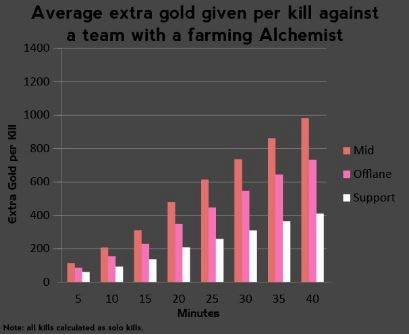
Hurting your friends
First off, Alchemist’s gold works in favor of opponents any time his allies die. The following chart shows the average gold per kill a team earned when killing Alchemist’s allies due to the AOE gold component. I will note that these figures were farmed out on 6.83 (when that original build from my tweet was researched), so they will be about 25% inflated.
Once again, those numbers are about 25% inflated. Alchemist’s inflated gold works against his team until it is turned into items (this is actually true for every hero, but it is especially true for Alchemist because his net worth is usually greater than his equivalent from the other team).
Hurting yourself
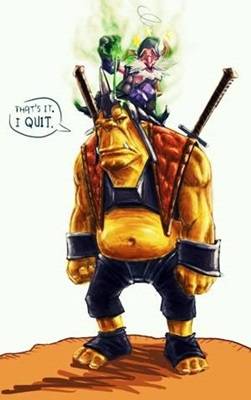
© grim1234
The other aspect of Alchemist is that he is able to get items very quickly compared to normal carries (obviously), but supports and other cores only get items and levels at the same rate they normally would. This means that Alchemist naturally wants to engage when he has an item advantage, ideally grouping in with his allies to push down towers and take engagements.
The problem is that his allies were not designed to peak at the same time as him.
In typical public matches at most skill levels, the result is either that Alchemist will farm longer than he needs to – giving opponent carries a chance to get core items so that they can effectively engage – or his team will try to engage with him earlier than they are prepared to do so, usually leading to unnecessary trades which give opponents more gold (see the figures above).
It’s just plain hard to coordinate with strangers to use this hero properly because every member of your team needs to be on the same page and prepared to go at the same time. Otherwise, you end up in the mid-to-late game having fed opponents extra AOE gold and with an inferior late-game carry.
What about mid Alchemist, you know, like Super?
This is the most popular Alchemist in pro games right now and for good reason: out of the mid lane, this hero can get a good early start, make it rain with rune control, and the team still gets a traditional farming core.
The problems that exist with a farming Alchemist still exist with a mid Alchemist: he still indirectly feeds gold to opponents and wants to engage at inopportune times for allies. Mid Alchemists work mostly on the back of strong team cohesion in professional games and are typically part of a finely-tuned and pre-rehearsed strategic outline.
When you have Vlad from Russia, Pedro from Peru, and 12-year-old Matthew playing with you in a public match, that’s probably not going to be your experience.
If you are going to run Alchemist as a core, it is vital that you reach out to your supports to help make them survivable as you grow, or they will accidentally use your own strength against you.
BigDaddy’s mid Alchemist shows you why pubs fail
If you want to look at the difference between a team-based Alchemist and the Alchemist you’ll typically play in a pub, watch Monkey Business versus Ninjas in Pyjamas from earlier today. In game one, BigDaddyN0Tail played a greedy Alchemist with the currently growing Radiance, Travels, Manta, Octarine Core build which appears to have been pioneered by YamateH from Team123.
That build allows for massive farming potential, but in a pub game it is extremely risky because the Alchemist himself doesn’t contribute like he would had he farmed into damage and also has a smaller window to take map control.
In order to make this strategy work, Monkey Business drafted a team which could engage aggressively and early as a whole squad. Cr1t built a Medallion of Courage, Miracle built drums out of the farming carry role, while Fly built the Mekanism.
Notice a trend? The team built as a unit, each making sure that the sum of their team would be greater than the individual heroes.
In addition, Monkey Business drafted a team that scales extremely well with Aghanim’s Scepters, allowing BigDaddyN0Tail to offset his massive net worth by feeding it into allies.
Notice that BigDaddy only has one kill at the end of this game. His team did the real work, he just created the underlying conditions for their success. It’s like how an Ocean floats the boat, but the boat actual lets you travel.
By creating a constant pressure and subsidizing their success, BigDaddy is able to create victory conditions.
It’ll be rare to see all those factors in your public matchmaking, which is why core Alchemists have such low winrates in public games.
I’m an old school badass and I remember offlane Alchemist
This doesn’t work so well anymore because the Dire side ancient stack was altered in 6.82 (making it harder to use acid to stack them from the lane) and because he is now vulnerable to burst damage while his ultimate is running.
What you end up with as an offlaner is the same thing you usually end up with if you run a more common offlaner: an underfarmed core who needs to participate in kills and utilize jungle stacks to catch up.
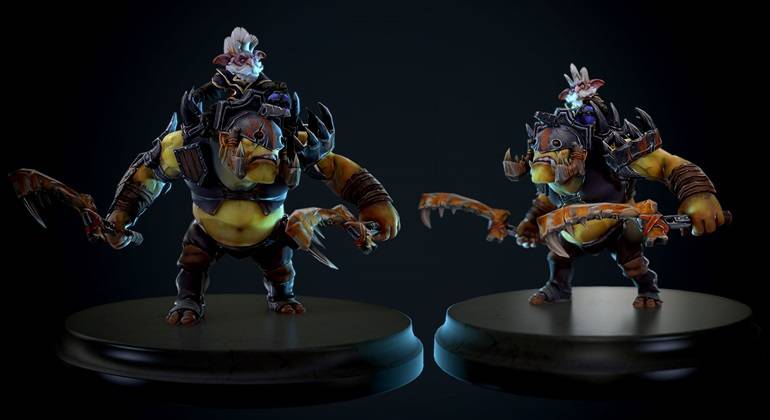
Dota 2 Alchemist – The Convicts’ Trophies © Lothrean
The problem is that unlike Clockwerk, Tidehunter, Dark Seer, Bristleback, or any other more common – dare I say “viable” – offlaners, Alchemist doesn’t provide much as an underfarmed core. He has a solid stun, but cores are usually expected to provide additional damage during engagements, that Alchemist just can’t dish out before he gets some items.
So, offlane Alchemists end up engaging into negative trades in an attempt to catch up, or they end up farming (the jungle or another lane) to catch up. Yes, he does catch up fairly quickly if you leveled Greevil’s Greed, but you probably didn’t out of the offlane because that would reduce your ability to zone your opponent or contribute to ganks.
In other words, in most situations, Alchemist doesn’t provide much in the offlane compared to other options.
If I do play Alchemist core, how should I skill?
I’m not a build designer, really, so I’ll stick to my strengths: researching. Taking a look at top Alchemist players as ranked on Dotabuff, here are some pretty common trends which are successful.
ForeV (from MVP) actually sometimes plays carry/mid Alchemist this patch. When in the safe lane, he typically builds Greevil’s Greed into Unstable Concoction. Presumably, this is because in the safe lane Alchemist can get kills with the help of lane supports.
In the mid lane, ForeV typically levels acid instead. This pattern is true of most high-ranked Alchemist players whose play history I creepily dissected.
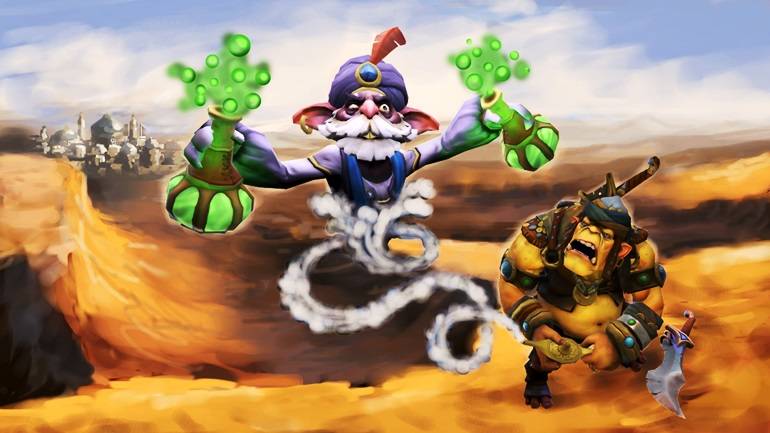
© J-Knez
If you go mid, that opening rune is very helpful, but remember not to scale Greevil’s Greed until you’re fairly certain you will get the rune. Otherwise, an Unstable Concoction can often be used to subsidize a kill, which is well worth losing a handful of Greevil’s Greed gold.
Radiance is very popular out of the mid lane, and I support this choice: going for a hugely expensive item actually sets Alchemist’s pace back just a touch, making him itemize closer to the pace of a “typical” core. That additional time will help your support players be ready when you want to engage, and the miss chance from Radiance will also help offset damage in a wide area, further helping out allies when you do engage.
As an Alchemist, you want to engage as quickly as can be effective. Whether it is Radiance, Vlad’s, Drums, or even a casual Buckler that you’ll sell later, picking up some sort of AOE item which will benefit allies is crucial for helping them be effective earlier in the game.
Is that support build from your tweet still good?
Yes, although a few more items have been added since then and the metagame has shifted. You’ll want to make decisions based on the individual game in terms of items (for example, against a Venomancer you may want to pick up a Pipe instead of a Mekanism or instead of an Assault Cuirass).
For roaming supports, you’ll now want to pick up a casual Greevil’s Greed in case you fall upon a bounty rune or knock down a jungle camp, but you probably don’t want it until level three or four.
In addition, the Maelstrom in this build was the most common item at the time, but that is exchangeable for any damage-dealing semicore item of similar price. Depending on the game, you may decide to go into Guardian Greaves instead of Maelstrom or to prioritize the BKB earlier. Obviously, everything is somewhat depending on the game situation.






5 Comments
miraz94
(126 comments)Osfrog should nerf this dog
March 11, 2016 at 9:05 amQuiT
(26 comments)I think he’s ok!
April 8, 2016 at 9:21 am935ice
(969 comments)Now it became: The pub difference why your Od/spec lose you games
April 16, 2016 at 12:41 pmKiop
(163 comments)lol^
April 19, 2016 at 8:43 pmbakala
(868 comments)Ye this hero is bullshit!
May 23, 2016 at 7:28 pm